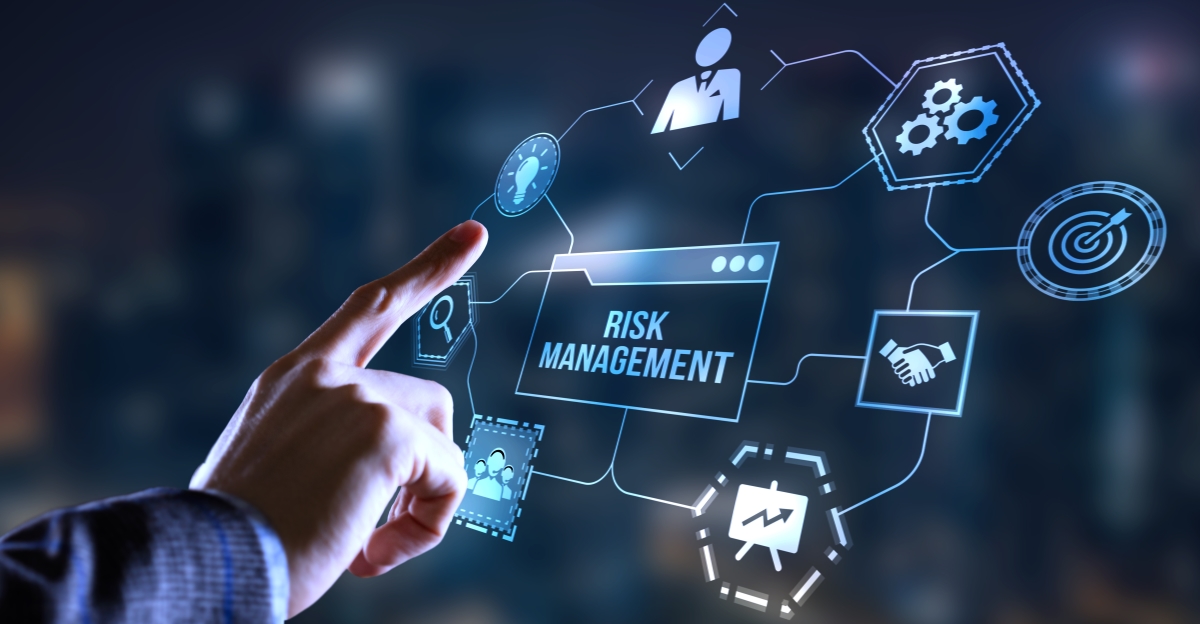Discovering the Value of Risk Management for Effective Decision-Making Approaches
In the elaborate globe of company, Risk Management becomes a vital consider the decision-making process. The capability to recognize prospective hazards and opportunities, and plan as necessary, can mean the distinction between success and failing. With tools such as SWOT and PESTEL, companies are outfitted to make informed options, cultivating resilience and adaptability in an ever-changing setting. Wondering how this works? Allow's unbox the dynamics even more.
Understanding the Concept of Risk Management
Risk Management, a critical element in decision-making, is typically misunderstood or oversimplified. Risk Management involves organized and disciplined approaches, making use of data and informative assessments. From economic uncertainties, lawful liabilities, calculated Management errors, to mishaps and all-natural catastrophes, it resolves various dangers - importance of risk management.
The Function of Risk Management in Decision-Making Processes
In the world of critical preparation and service operations, Risk Management plays an integral duty in decision-making procedures. Risk Management hence ends up being an important tool in decision-making, aiding leaders to make enlightened options based on a detailed understanding of the risks involved. Risk Management offers as a crucial component in the decision-making processes of any kind of organization.

How Risk Management Enhances Strategic Planning
In the context of strategic preparation, Risk Management plays a critical function. Starting with the identification of possible risks, it additionally includes the implementation of Risk reduction measures. The role of Risk Management is dynamic but not fixed, as it requires constant tracking and adjusting of approaches.
Recognizing Potential Threats

Carrying Out Risk Reduction
Having developed the significance of identifying potential dangers, the following step is to check out Risk mitigation. This procedure involves creating and executing methods to take care of identified threats effectively. It is a critical aspect of strategic preparation as it boosts decision-making by decreasing prospective unfavorable outcomes. Risk reduction strategies can range from Risk avoidance, Risk transfer, to run the risk of decrease. Each approach must be tailored to the particular Risk, considering its possible impact and the organization's Risk tolerance. Reliable Risk mitigation needs a deep understanding of the Risk landscape and the possible impact of each Risk. This understanding allows companies to focus on dangers and assign resources effectively, making sure that one of the most significant hazards are resolved first.
Tracking and Adjusting Methods
Though Risk reduction is a vital step in tactical planning, continuous monitoring and change of these approaches is equally vital. It also gives an opportunity to review the success of the Risk Management procedures, enabling modifications to be made where needed, further improving tactical planning. Tracking and changing Risk Management methods is a critical part for improving a company's durability and calculated preparation.
Situation Researches: Successful Risk Management and Decision-Making
In the world of company and money, successful Risk Management and decision-making commonly work as the pillars of prosperous ventures. One such entity is a multinational oil company that mitigated financial loss by hedging versus changing oil costs. In another circumstances, a tech start-up grew by recognizing and approving risky, high-reward methods in a volatile market. An international bank, encountered with governing uncertainties, efficiently browsed the circumstance with positive Risk assessment and visit this site vibrant decision-making. These cases highlight the value of sharp Risk Management in decision-making procedures. It is not the absence of Risk, yet the Management of it, that commonly differentiates effective business from not successful ones. These instances highlight the important role of Risk Management in calculated decision-making. importance of risk management.
Devices and Techniques for Effective Risk Management
These devices, such as Risk signs up and warmth maps, aid in recognizing and examining possible risks. Risk reaction strategies, a crucial element of Risk Management, entail accepting, preventing, transferring, or mitigating risks. With these strategies and tools, decision-makers can browse the Learn More Here facility landscape of Risk Management, consequently helping with educated and effective decision-making.
Future Patterns in Risk Management and Decision-Making Techniques
As we explore the large landscape of Risk Management, it ends up being noticeable that the techniques and tools made use of today will proceed to advance. Future trends point in the direction of a raised dependence on innovation, with man-made knowledge and artificial intelligence playing considerable roles. These technologies will make it possible for organizations to click over here now predict possible dangers with better precision and make more educated decisions. In addition, there will be an expanding emphasis on resilience, not simply in managing dangers but additionally in bouncing back from damaging circumstances. The principle of Risk society, where every member of a company is aware and included in Risk Management, will certainly gain a lot more prestige. These patterns proclaim a more positive and comprehensive approach towards Risk Management and decision-making.
Final thought

Risk Management thus comes to be a vital device in decision-making, aiding leaders to make educated selections based on a detailed understanding of the dangers involved. Risk reduction approaches can vary from Risk evasion, Risk transfer, to risk decrease (importance of risk management). Efficient Risk reduction requires a deep understanding of the Risk landscape and the prospective influence of each Risk. Risk action techniques, a key part of Risk Management, involve approving, preventing, transferring, or mitigating dangers. The concept of Risk culture, where every participant of an organization is mindful and included in Risk Management, will certainly acquire extra importance
Comments on “A Detailed Guide to Understanding the Importance of Risk Management”